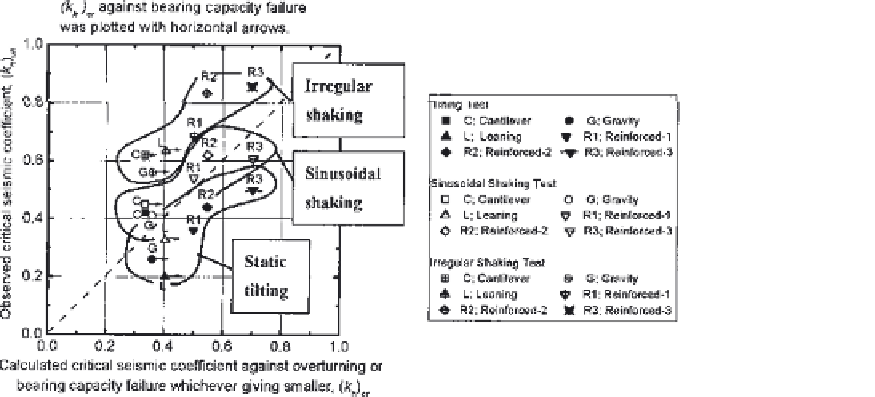Geoscience Reference
In-Depth Information
Dynamic effects in the shaking table tests, such as an amplification and a phase
lag between the response and the base accelerations, and effects of progressive
failure were not considered in these evaluation procedures of RW stability.
7.2 Observed Critical Seismic Coefficients
The observed critical seismic coefficients (k
h
)
ult
at the ultimate overall wall
failure condition were obtained based on the relationships between the seismic
coefficient k
h
and the horizontal displacement d
top
measured at a distance of 5 cm
below the top of the wall
(Fig. 12)
.
As previously mentioned, in the sinusoidal
shaking tests and the tilting tests, after exceeding about 25 mm, which
corresponds to about 5% of the total wall height, the d
top
-value increased very
rapidly, soon resulting into the ultimate overall wall failure. The values of (k
h
)
ult
are, therefore, defined as those when the d
top
-value exceeded 5%of the wall height.
7.3 Comparison Between Observed and Calculated Critical
Seismic Coefficients
Figure 23 shows the relationships between the observed values of (k
h
)
ult
for the
ultimate overall wall failure and the calculated values of (k
h
)
cr
against external
instability obtained for the observed major failure pattern (i.e., overturning or
bearing capacity failure). For each case, the calculated value of (k
h
)
cr
against
Figure 23
Comparison of observed critical seismic coefficients to calculated ones
against overturning or bearing capacity failure.









Search WWH ::

Custom Search